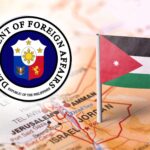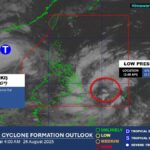The multi-billion dollar bridge project connecting the provinces of Cavite and Bataan will begin construction before the end of 2025, President Ferdinand “Bongbong” Marcos Jr. announced.
The Bataan-Cavite Interlink Bridge project, envisioned to be one of the world’s longest maritime bridges, is set to be funded through a multi-tranche financing scheme, with $2.1 billion provided by the Asian Development Bank and $1.14 billion co-financed by the Asian Infrastructure Investment Bank.
“Before the year ends, construction of the Bataan-Cavite Interlink Bridge will begin. This 32-kilometer-long bridge will stretch across Manila Bay,” Marcos stated during his fourth State of the Nation Address at the Batasang Pambansa in Quezon City.
“If the current travel time from Mariveles to Naic takes five hours, it will eventually be reduced to just 45 minutes,” the President added.
Spanning 32.15 kilometers, the project will create a strategic connection between Regions III and IV-A, promoting economic growth and boosting tourism.
The project will be divided into seven contract packages, with construction starting first on the two land-based sections.
Package 1 covers the 5-kilometer Bataan Land Approach, while Package 2 includes the 1.35-kilometer Cavite Land Approach.
Packages 3 and 4 consist of marine viaducts in the north and south, totaling 20.65 kilometers in length.
Packages 5 and 6 are the North Channel and South Channel Bridges, measuring 2.15 and 3.15 kilometers respectively.
The seventh package involves project-wide ancillary works.
The 32.15-kilometer, four-lane inter-island bridge will link Barangay Alas-asin in Mariveles, Bataan, with Barangay Timalan Concepcion in Naic, Cavite.
The bridge will feature two navigational bridges—the 400-meter North Channel Bridge and the 900-meter South Channel Bridge—which will pass near Corregidor Island. Approximately 80% of the structure will be over water.
Bataan-Cavite Interlink Bridge
The **Bataan-Cavite Interlink Bridge (BCIB)** is a planned 32.15-kilometer sea-crossing bridge in the Philippines that will connect Bataan and Cavite across Manila Bay. Once completed, it will be one of the longest marine bridges in the world, significantly reducing travel time between the two regions and boosting economic growth. The project, initiated under the “Build, Build, Build” program, reflects the government’s efforts to improve infrastructure and transportation networks in the country.
Manila Bay
Manila Bay is a natural harbor in the Philippines, renowned for its stunning sunset views and historical significance. It was the site of the 1898 Battle of Manila Bay during the Spanish-American War, where the U.S. Navy defeated the Spanish fleet. Today, the bay area is a popular destination, featuring the Manila Baywalk and ongoing rehabilitation efforts to restore its ecosystem.
Batasang Pambansa
The **Batasang Pambansa** (National Legislature) is the seat of the House of Representatives of the Philippines, located in Quezon City. Established in 1978 during the Marcos regime, it served as the legislative building under the 1973 Constitution and was later retained after the 1987 Constitution restored the bicameral Congress. Today, it remains a key political landmark where major legislative decisions are made.
Quezon City
Quezon City is a highly urbanized city in the Philippines, established in 1939 and named after Manuel L. Quezon, the country’s second president. It served as the capital from 1948 to 1976 before Manila regained the title. Today, it is the most populous city in Metro Manila and a major hub for government, education, and commerce, home to landmarks like the Quezon Memorial Circle and the University of the Philippines Diliman.
Mariveles
Mariveles is a coastal town in the Bataan Peninsula, Philippines, known for its historical significance during World War II. It served as the starting point of the infamous Bataan Death March in 1942, where thousands of Filipino and American prisoners of war were forced to march to Capas. Today, it is a gateway to nearby natural attractions, including mountains and beaches, while preserving memorials honoring its wartime past.
Naic
Naic is a historic municipality in Cavite, Philippines, known for its role in the country’s struggle for independence. It was established in 1791 and became a significant site during the Philippine Revolution, where Filipino revolutionaries, including Andres Bonifacio, sought refuge. Today, Naic preserves its heritage through landmarks like the Naic Church and the Bonifacio Trial House.
Corregidor Island
Corregidor Island, located at the entrance of Manila Bay in the Philippines, is a historic site known for its strategic military role during World War II. Often called “The Rock,” it served as a key defensive fortress for the U.S. and Filipino forces against Japanese invasion in 1942. Today, it is a popular tourist destination, featuring preserved ruins, war memorials, and museums that honor its wartime legacy.






